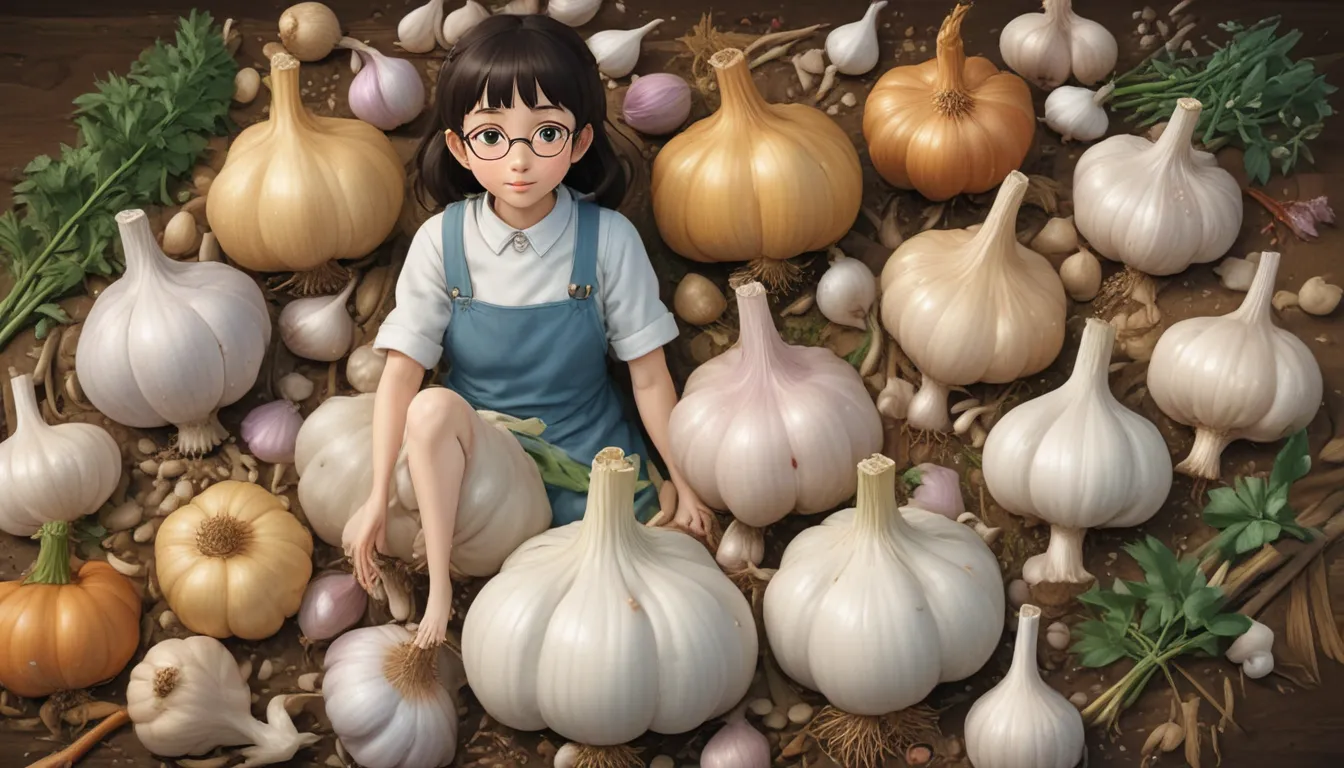Comprehensive Guide: Identifying and Managing Garlic Diseases

Garlic is a versatile and beloved ingredient in many cuisines around the world. Whether you prefer it on toast, in roasts, or as a flavor booster in your favorite dishes, there’s no denying the appeal of this flavorful bulb. However, like any plant, garlic is vulnerable to various diseases that can threaten its health and productivity.
In this comprehensive guide, we will explore seven common garlic diseases, their causes, symptoms, and effective management strategies to help you protect your precious garlic crop. By understanding these diseases and learning how to identify and control them, you can ensure a thriving harvest year after year.
1. Basal Rot
Basal rot is a severe disease caused by the fungus Fusarium oxysporum f. sp. cepae, posing a significant threat to commercial garlic production worldwide. This disease manifests as yellowing foliage, dying leaves, and rot below ground, affecting the overall health of the plant.
Symptoms of basal rot include yellowing of leaf tips, pink to black discoloration of roots, and white or pink fungal spores in the base of cloves. To prevent basal rot, consider the following measures:
- Plant garlic cultivars resistant to fusarium or basal rot.
- Rotate allium crops every three years to reduce pathogen buildup in the soil.
- Avoid planting garlic near corn, tomatoes, sunflowers, black beans, cowpeas, or oats.
- Store harvested bulbs at 33 to 39°F to prevent further spread of the disease.
2. Botrytis Rot
Botrytis rot, caused by Botrytis porri, is characterized by dark brown or black fungal spores and soft spots on garlic bulbs. This disease can lead to yellowing and dying of outer leaves and can continue to develop post-harvest if not addressed promptly.
To prevent botrytis rot, follow these guidelines:
- Avoid damaging bulbs during growth to prevent entry points for the pathogen.
- Use copper fungicides or beneficial bacteria products for effective control.
- Consider using Mycostop Biofungicide to combat a range of fungal diseases.
3. Downy Mildew
Downy mildew is caused by the oomycete Peronospora destructor and can result in yellowing, browning, and rotting of garlic plants. Symptoms include yellow or brown leaves and white fuzz on foliage in humid climates. To manage downy mildew effectively:
- Maintain proper spacing between plants to improve air circulation.
- Water at the soil level and avoid sprinkler irrigation.
- Use copper fungicides or beneficial bacteria products for early-stage treatment.
4. Mosaic Virus
Garlic mosaic virus and onion yellow dwarf virus are transmitted by aphids and can lead to stunted growth and leaf discoloration in affected plants. Prioritize aphid control and use certified disease-free seed cloves to prevent viral infections.
Remember, there is no cure for viral diseases, so removal of infected plants is crucial to prevent further spread.
5. Purple Blotch
Purple blotch, caused by the fungus Alternaria porri, manifests as purple blotches on garlic leaves and bulbs. To manage this disease:
- Maintain adequate spacing between plants and promote air circulation.
- Water at the soil level and avoid overwatering.
- Use copper fungicides for effective control.
6. Rust
Rust, caused by Puccinia porri, presents as oval-shaped pustules on garlic leaves and prefers high humidity and moderate temperatures for development. To manage rust effectively:
- Choose resistant garlic cultivars.
- Use copper fungicides every three weeks to control the disease.
7. White Rot
White rot, caused by Stromatina cepivorum, is a devastating disease that can survive in the soil for extended periods. To prevent white rot:
- Plant disease-free seed cloves or treat seeds in hot water to kill pathogens.
- Practice proper sanitation and avoid introducing contaminated soil or plants.
By following these guidelines and incorporating effective disease management strategies, you can protect your garlic crop from common diseases and ensure a healthy, productive harvest. Remember to monitor your plants closely, act promptly at the first sign of disease, and implement preventive measures to minimize future outbreaks.
Now that you are equipped with valuable insights into identifying and managing garlic diseases, you can confidently care for your garlic crop and enjoy a bountiful harvest. Share your experiences and questions in the comments below, and let’s continue to grow healthy, disease-free garlic together!
If you’re interested in expanding your garlic-growing knowledge, check out the following guides:
- How to Grow ‘Polish Hardneck’ Garlic
- Tips for Growing Garlic in Containers
- Tips for Growing Garlic in Warm Climates
*





